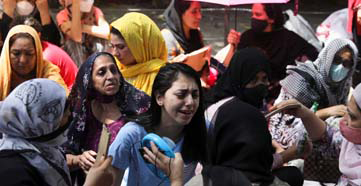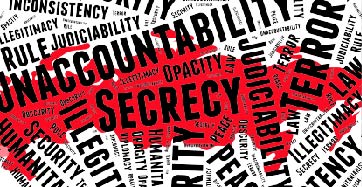Ukraine: Refugee crisis emphasises need for coordinated international response

Refugees from Ukraine on the border with Slovakia. Vanja/AdobeStock.com
For refugee rights advocates, the displacement crisis created by Russia’s invasion of Ukraine in late February demonstrates the importance of coordinated, compassionate and less bureaucratic approaches to international refugee support.
Alex Stojicevic, Refugee Officer of the IBA Immigration and Nationality Law Committee and managing partner of MKS Lawyers in Vancouver, says it highlights the need for widespread adoption of the IBA’s proposal for Emergency Evacuation Visas (EEVs), put forward in 2019.
The idea is that, ‘in emergency situations where people’s lives are directly at risk, you bring a multilateral, multi-organisational approach to first get people out of a dangerous situation into a safer one, and then triage them with the entire range of multilateral, multinational, complementary pathways to both refugee protection and immigration and try to match them as best you can’.
In 2017, the Italian government evacuated around 1,000 people from Libya to Sicily, where a triage centre had been created with the support of non-governmental organisations (NGOs) focused on refugee resettlement. When evacuees arrived, NGOs supported them, including with legal advice, and every pathway for residence and protection was explored.
Stojicevic says that ‘all of this was done in a complementary way and with the maximum amount of agency for the migrants themselves, so people could choose which way they wanted to go’ – whether family reunification or refugee protection, depending on their hopes for return to Libya in the future.
‘This worked very well,' Stojicevic adds. ‘They processed a lot of people in a very short period of time, a lot of community groups got involved at the grassroots […] And this has largely informed some elements in the EEV model.’
The EEV proposal includes creating a permanent committee to advise the UN Refugee Agency (UNHCR) on triggering mechanisms for when EEVs could be used, and Stojicevic says the emergency evacuation of Afghans when the Taliban reached Kabul in August 2021 would have been an appropriate situation. In fact, temporary ad hoc arrangements used by some Western countries to fly large groups of people to a pre-arranged safety point in neighbouring countries mirrors part of the proposal.
‘The better approach would have been if this was done coherently and multilaterally’, Stojicevic adds.
‘If we had had something in place where resources could be pooled on the understanding that everybody would participate that could – in terms of moving and accepting people – and with the full complement of processes and pathways, then you would have had a more coherent international response’, he says.
International treaties in areas such as biometric identification create a barrier to widespread adoption of EEVs, but Stojicevic hopes that the mobile biometric stations being piloted by some countries will address this issue.
Greg Siskind, Vice-Chair of the IBA Immigration and Nationality Law Committee and a founding partner at Siskind Susser in Memphis, believes that ‘to the extent nations work together and have a more coordinated approach, that is the way ultimately to help people as quickly as possible’.
Instead, just as Ukrainians are urgently seeking safe passage to protection in Western Europe and beyond, many Afghans who were promised protection in 2021 have not yet received it.
Siskind says the US evacuated 80,000 Afghans quickly, but around 40,000 are still waiting – outside the US, with some still in Afghanistan – for humanitarian parole and those applications have been unadjudicated since August. The Ukraine crisis, he says, has thrown a politically awkward light on this recent precedent, adding pressure on the US to improve its response for both groups.
For Siskind, the best approaches have been those of Canada and Poland, where bureaucratic processes have been delayed to prioritise swift protection for Ukraine’s refugees. ‘In a refugee crisis, the last thing you want is to set up a bureaucratic structure where people have to jump through hoops before they can escape to safety’, he says.
In a refugee crisis, the last thing you want is to set up a bureaucratic structure where people have to jump through hoops before they can escape to safety
Greg Siskind
Vice-Chair, IBA Immigration and Nationality Law Committee
Matthew Saltmarsh, Head of News and Media for UNHCR, praises the EU’s use of its Temporary Protection Directive to avoid strain on traditional asylum systems by granting collective protection status, one to three years of residence and other rights to people fleeing Ukraine.
This is ‘the fastest exodus of people on this scale, certainly in Europe since the Second World War, so this Temporary Protection Directive has been hugely helpful and beneficial’, he says.
The UK, however, has not waived visa requirements for people fleeing Ukraine, and the government has faced criticism for slow application processing.
As of early April, only 1,200 of the 12,500 refugees granted visas under the Homes for Ukraine scheme have arrived, with 31,000 applications still unadjudicated. Just over a third of the 28,500 refugees granted family reunification visas have arrived. The new Refugees Minister, Lord Harrington, told radio station LBC that the rollout of the schemes was ‘embarrassing’.
A Home Office spokesperson said, ‘We continue to process visas for the Homes for Ukraine scheme as quickly as possible, but accept progress has not been quick enough’.
The Home Office has made changes to visa processing, including allowing for biometric checks to be carried out after arrival in the UK, and ‘greater resource has gone into the system’.
Saltmarsh sees other signs for optimism, including an outpouring of support from the private sector. ‘We got absolutely inundated with emails and calls from individuals, but also from companies that wanted to help in any way they could’, he says.
‘And that’s something that we hope can be harnessed beyond the Ukraine crisis for the long -term and that can become structural and sustainable,’ adds Saltmarsh. ‘If you can bring all of those players together and create an ecosystem that systemically supports refugees and works on solutions and development then I think there is reason to be optimistic.’
However, he emphasises that there are at least 85 million forcibly displaced people globally whose needs are being exacerbated by economic contractions that may affect offers of aid from other nations.
While there has been a generous financial response for support of Ukraine’s refugees, initiatives for other regions facing displacement remain chronically underfunded. ‘Let's not forget those other parts of the world’, he says.



